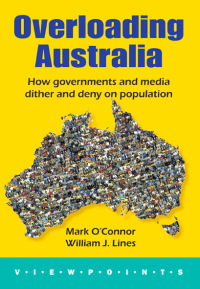 For those with their eyes open population growth and the immigration that fuels it are never out of the news. ... unaffordable housing drives young families into debt slavery (even pushing some to the less-expensive urban fringe where a number died in Melbourne’s recent fires)... strained infrastructure leading to blackouts, cancelled train services... traffic congestion, draining energy from the economy and from human lives...hospitals that can no longer care for the people they serve... water supplies that dwindle as drought and growth desiccate cities and stretch the capacity of farms... pleasant suburbs degraded by intensive redevelopment; greenhouse gases ...and a natural environment wilting under the burden of numbers.
For those with their eyes open population growth and the immigration that fuels it are never out of the news. ... unaffordable housing drives young families into debt slavery (even pushing some to the less-expensive urban fringe where a number died in Melbourne’s recent fires)... strained infrastructure leading to blackouts, cancelled train services... traffic congestion, draining energy from the economy and from human lives...hospitals that can no longer care for the people they serve... water supplies that dwindle as drought and growth desiccate cities and stretch the capacity of farms... pleasant suburbs degraded by intensive redevelopment; greenhouse gases ...and a natural environment wilting under the burden of numbers.
Click here to purchase book
"Review by Katharine Betts of Mark O’Connor's and WilliamJ. Lines's book,Overloading Australia,"
People and Place, vol. 17, no. 1, page 76.
Australia’s population is growing rapidly. In March 2009 it stood at 21.6 million. The current Prime Minister, Kevin Rudd, takes it for granted that it will grow to 35 million by 2051.[1] In 1999 when Philip Ruddock was Minister for Immigration he told Australians that there was no need for a population policy because we were unlikely to grow much beyond 23 million. He added that the ‘nation cannot afford to return to [an immigration] program characterised by big numbers and little thought’. [2] Nonetheless the current growth surge, keenly embraced by the new Labor Government, began quietly under the Coalition soon after Ruddock’s 1999 statement.[3]
Much of Australia’s growth is directly due to immigration (nearly 60 per cent in 2007–08) and much of the growth from natural increase is attributable to the Australia-born children of immigrants. For example, in 2007, 25 per cent of all births were to overseas-born mothers.
For those with their eyes open population growth and the immigration that fuels it are never out of the news. There is the unaffordable housing that drives young families into debt slavery [4] (even pushing some to the less-expensive urban fringe where a number died in Melbourne’s recent fires).[5] There is strained infrastructure leading to blackouts, cancelled train services, and to traffic congestion, draining energy from the economy and from human lives. [6] There are hospitals that can no longer care for the people they serve;[7] water supplies that dwindle as drought and growth desiccate cities and stretch the capacity of farms;[8] pleasant suburbs degraded by intensive redevelopment;[9] greenhouse gases that refuse to abate;[0 ]and a natural environment wilting under the burden of numbers.
But while stories of water shortages and degraded infrastructure abound, few of the public figures who comment on them acknowledge the role of population growth in creating these problems and making them harder to overcome. Here Mark O’Connor and William Lines have done us an important service; they have joined the dots between these social and environmental ills and our rapid growth.
From the picture they create a reader could, at first, believe that Australia’s pattern of growth was promising. It is mainly due to government immigration policy, so shouldn’t it be relatively easy to rein it in? Besides immigration is not popular; support for the post-2000 increase is minimal among both the Australia-born and migrants themselves.[11] But as O’Connor and Lines make clear, immigration in fact makes it harder to halt growth because the businesses that profit from it lobby for it, and property developers with deep pockets appear to have bought the favour of some of the politicians who create it.[12]
High migration means more customers, cheaper labour, and minimal training costs. All of these boons intensify pressures from self-interested groups to keep the numbers coming. As O’Connor and Lines put it: ‘It is no surprise that the housing industry lobbies not for the size of housing industry that Australia’s population needs but for the size of Australia’s population that the industry needs’.[13] The concentrated benefits enjoyed by special interests (on the right of the political spectrum) trump the unorganised interests of the majority who bear the costs.
At the same time many opinion makers on the left are quick to decry criticism of immigration-fuelled growth as scapegoating immigrants, even as racism.[14] As if this were not enough, business interests fund academic research into demography and immigration, naturally channeling their money towards those likely to produce results friendly to growth. This is a chilling circumstance at a time when universities are starved of money and academics are under crushing pressure to bring in research grants.[15] Other sources of research funds include state and federal government departments, most of which are committed to the growth targets set by politicians.[16] Researchers who might otherwise point to the costs of growth are unlikely to win such grants; they also risk the disapproval of their left-liberal peers.
The authors point out that the left’s fixation on seeing criticism of immigration-fuelled growth as racism is ‘a good cloak for elitism … the people must not be given power because their views are barbaric’.[17] Thus even though high migration is unpopular, a pro-growth right and a left that is anti-anti-growth mean that voters are unorganised and voiceless.
The authors marvel at the way in which the motives of the occasional reformer who questions growth are earnestly probed while no one examines the growth lobby as it enjoys the handsome profits brought to them by each plane load of new consumers. O’Connor and Lines assert that left-wing xenophobia hunters are not interested in old fashioned rent seekers despoiling the community for their own advantage; they prefer to enjoy the comforts of their moral superiority.[18]
Why must O’Connor and Lines be the ones to point to the damage done to Australia by this blend of greed and snobbery? Why have the media failed to show it to us? Here the authors have a telling vignette about Ian Lowe, a distinguished scientist who takes population seriously. He is also president of the Australian Conservation Foundation and a frequent media commentator. O’Connor asked him why he so seldom spoke out about population. Lowe replied that he often did but that when he did he was ignored. He also told O’Connor ‘how he was sacked as a columnist from one paper for insisting on it. He [Lowe] found that the most biased media were the grossly pro-growthist Murdoch papers’.[19]
Media silence on the question is not always an accidental byproduct of pleasing pro-growth advertisers while deferring to the sensibilities of the intelligentsia. It can be deliberate.[20] O’Connor and Lines argue that just as other vendors to the domestic market have a product to sell, so too do the commercial media; it is always easier to sell to a growing market rather than to compete for market share, or indeed to export. The commercial media have their own vested interests in growth. While the ABC should be immune from these interests, it is more likely to be infected with the racism virus, the infection that makes its host see any scepticism about growth as racism in disguise.[21] Nonetheless, perhaps because it does not profit from growth, the ABC has proved more receptive to Overloading Australia than have other media outlets.
Both authors are accomplished writers and the book is brief and clear; so far it has achieved a fair degree of media coverage. It was launched in February 2009 by Bob Carr, former premier of New South Wales, and a rarity among Australian premiers in that he is a critic of growth. At the launch Carr said: ‘There is a hardly any significant process at State or Federal level today that is allowed to proceed without an environmental impact statement except the pushing up of population’.
O’Connor’s account of the launch goes on to report how Carr ‘spoke of his frustration, when he was Premier, at having a vastly increased Sydney population forced upon him by decisions made in Canberra. … He was then in the invidious situation of having to destroy amenities and allow developers to invade protected areas. As he put it, people don’t want Sydney to be crowded and built up, but they also don’t want it to expand into places like Kuringai Chase and Botany Bay; yet one of those two things has to happen if a million extra people are put into Sydney’.[22]
Some of the media reports have been neutral [23] or even favourable. For example O’Connor was invited to write an opinion piece for the Sydney Morning Herald,[24] and the Adelaide Advertiser.[25] He was also interviewed on the ABC Radio National station on Counterpoint,[26] Breakfast [27] and Late Night Live.[28] But press coverage has been more ambivalent and its tenor bears out the authors’ analysis.
A former Prime Minister, Malcolm Fraser, said that ‘the extent to which population influenced environmental policy depended on how selfish Australians wanted to be’ and that ‘some people citing environmental reasons for reduced migration were simply opposed to immigration’.[29] Charles Berger, in a generally sympathetic piece in The Canberra Times, wrote that: ‘Overloading Australia … has sparked another round of debate about Australia’s population. Some commentators have been quick to detect a murky agenda of xenophobia hovering behind a green cloak in the population debate. They are right to be suspicious. …’[30] He did, however, go on to exonerate O’Connor and Lines.
Brigid Delaney in the Melbourne Age was not so generous. She wrote that to rein in growth was to risk ‘the development of our inner lives’ because immigrants energise their adopted countries. But there was worse:
Environmental issues can be a handy Trojan horse with which to wheel in policies and debates about immigration that we are too squeamish to discuss baldly. After all, no one wants a rerun of Enoch Powell’s infamous ‘Rivers of Blood’ speech in 1968 that led to race riots across England, nor Pauline Hanson’s polarising comments on immigration that brought Australia to the brink of a spiritual crisis.[31]
But O’Connor and Lines do not advocate an end to immigration, just a balanced intake which would still leave room for refugees.[32] This is a humanitarian position; they write that deliberately ‘pushing up our own population … cannot be justified on environmental grounds. It could only be justified on international humanitarian grounds if we could believe that it would leave us, somehow, very much more able and more willing to help our neighbours’.[33] They also point to the immorality of Australia continuing to pirate doctors and other health workers from poor countries to compensate for our own reluctance to invest in local training.[34] Xenophobia hunters, however, are more interested in displaying their self-righteousness than in understanding and debating an opposing point of view.
How can serious advocates of a moral and sustainable position on population growth cut through in such a climate? One way is to write the kind book that O’Connor and Lines have written, well researched, cogent and readable. Another is put forward a shocking policy proposal.
This concerns both sacrifice and exploitation. We can see its outlines in debate about the Rudd Government’s proposed emissions trading scheme. This will cap Australia’s overall greenhouse gas emissions through the sale of permits to industry, but it will also set a floor under which emissions are unlikely to fall. As community awareness of this has spread many householders are dismayed; their individual sacrifices to lower emissions are not only going to count for nothing, they will actively help polluters to pollute. Private spending on solar panels, solar hot water, and on low-emission cars will do nothing to reduce greenhouse gases; it will just enable dirty industries to emit more. But the same can be said of many sacrifices that individual Australians make for the environment; they are all nullified by the extra people brought in to pander to the growth lobby.
Here O’Connor and Lines put forward their suggestion. Instead of washing up only once a day and letting the garden die, we should all waste water. Saving water just makes it easier for growthists to increase the population. (They do say that would never suggest that we waste a non-renewable resource.)[35] But why struggle to cut your shower to less than two minutes when the Government is bringing in more than 200,000 extra people a year?
The answer? Take a deep bath and bring the crisis to a head. And while you are enjoying your bath you could read this excellent book.
Mark O’Connor and William J. Lines, Overloading Australia: How governments and media dither and deny on population, Envirobook, Sydney, December 2008, ISBN 9780858812246, A$19.95
Available online from < www.abbeys.com.au>, < www.readings.com.au> and < www.booktopia.com.au>.
References
1 See Rudd quoted in M. Franklin, ‘Rudd warns Australia must prepare for emerging arms race across AsiaPM flags major naval build-up’, The Australian, September 10 2008, pp. 1, 6
2 P. Ruddock, ‘The Coalition Government’s position on immigration and population policy’, People and Place, vol. 7, no. 4, 1999, pp. 6–12
3 See P. Kelly, ‘Restocking the nation’, The Weekend Australian, 3 August 2002, p. 28.
4 J. Hewett, ‘Under mortgage pressure’, The Australian, 20 October 2007, p. 21; B. Day, ‘How to plan for a fiasco’, The Australian, 22 April 2008, p. 14
5 Editorial, ‘A tragic week in Australian history’, The Australian, 14 February 2009, p. 16
6 AAP, ‘Heatwave claims lives’, The Age, 1 February 2009; AAP, ‘Qld: Labor plan to cut southeast traffic congestion’, Australian Associated Press General News, 26 February 2009; J. Gordon and R. Sexton, ‘National road chaos looms’, The Age, 8 March 2009, p. 1; C. Lucas, ‘Connex hit with commuter squeeze’, The Age, 5 March 2009, p. 10
7 R. Wallace, ‘Hospitals fail to meet most targets’, The Australian, 3 October 2008, p. 7
8 G. Roberts and P. Murphy, ‘Recycled sewage “will have bugs”’, The Australian, 29 October 2008, p. 9; B. Doherty, ‘Water plan may not go far enough’, The Age, 23 October 2008, p. 1
9 M. Clayfield, ‘There’s a hole in our suburb, dear Labor, oh dear’, The Australian, 7 March 2009, p. 5
10 G. Readfearn, ‘Pollution skyrockets Coal and gas for electricity blamed’, The Courier-Mail, 12 January 2009, p. 11; T. Arup, ‘Emissions heat up in economic meltdown’, The Age, 14 March 2009, p. 4
11 See M. O’Connor and W. J. Lines, Overloading Australia, Envirobook, Sydney, 2008, p. 107.
12 Others may not need persuading. See ibid., pp. 4, 8–9, 26, 88ff, 98, 106, 145, 162.
13 ibid., pp. 125–6
14 ibid., pp. 141ff, 160, 164, 167, 172–3
15 For the role of the Scanlon Foundation with its mission to create ‘a larger cohesive Australian society’, see ibid., p. 82 and p. 205 n. 199. The Foundation believes that the future prosperity of Australia is ‘underpinned by continued population growth’. See < http://www.scanlonfoundation.org.au/socialcohesion.html> accessed 9/3/09.
16 For example academics critical of the high growth trajectory of the Victorian Government’s Melbourne 2030 strategy, and who are likely to apply to it for research contracts, are well advised to keep their criticism to themselves. A public servant conveyed this warning, as a friendly gesture, to a group that I was a member of in late 2003.
17 O’Connor and Lines, 2008, op. cit., p. 144
18 See ibid., p. 145. 19 ibid., p. 171
20 ibid., pp. 38, 133–34
21 O’Connor and Lines devote a chapter to the pro-immigration bias of the ABC. See ibid., pp. 158–164 and p. 141ff.
22 Email from Mark O’Connor to [email protected] 10 February 2009
23 See P. Ker, ‘Population Australia’s “big threat”’, The Age, 24 January 2009, p. 3; P. Ker and A. Morton, ‘Population debate booms’, The Age, 30 January 2009, p. 2.
24 M. O’Connor, ‘Many in denial over rising population’, The Sydney Morning Herald, 19 December 2008, p. 27
25 M. O’Connor, ‘Australia’s bizarrely high population growth lies behind many of our worst problems’, The Advertiser, 3 March 2009, p. 18
26 Monday 1 December 2008, audio available at < http://www.abc.net.au/rn/counterpoint/stories/2008/2434745.htm> accessed 9/3/09
27 Wednesday 28 January 2009, audio available at < http://www.abc.net.au/rn/breakfast/stories/2009/2475805.htm> accessed 9/3/09
28 Tuesday 5 March 2009, audio available at < http://www.abc.net.au/rn/latenightlive/> accessed 9/3/09
29 Quoted in Ker and Morton, 2009, op. cit.
30 C. Berger, ‘Aim for sustainable population and generous immigration’, Canberra Times, 13 February 2009, p. 15
31 B. Delaney, ‘Murky agenda behind this green debate’, The Age, 27 January 2009, p. 11
32 O’Connor and Lines, 2008, op. cit., p. 72ff
33 ibid., p. 57
34 See ibid., pp. 69, 110.
35 ibid., pp. 182–184
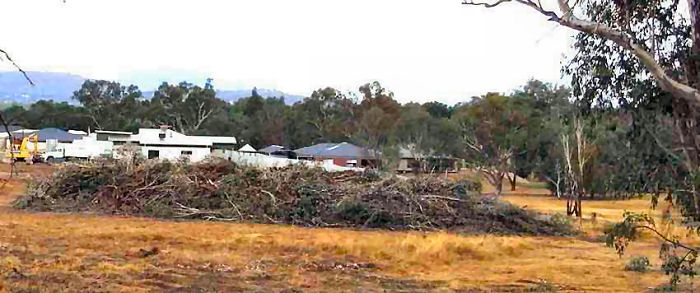

 Radiocarbon-testing has confirmed that a giant rare old-growth Eucalyptus regnans located in its natural forest habitat on East Gippsland's Brown Mountain has been chainsawed by VicForests, despite it being scientifically confirmed to be at least 500 years old.
Radiocarbon-testing has confirmed that a giant rare old-growth Eucalyptus regnans located in its natural forest habitat on East Gippsland's Brown Mountain has been chainsawed by VicForests, despite it being scientifically confirmed to be at least 500 years old. No regard has been made for the existence value of a Victorian 500 year old natural asset, nor the habitat requirements for the typical arboreal animals and forest owls dependent on this old growth habitat tree or its associative forest dependent habitat. Under State-sanction, ignorant VicForest butchers have plundered, ransacked and run.
No regard has been made for the existence value of a Victorian 500 year old natural asset, nor the habitat requirements for the typical arboreal animals and forest owls dependent on this old growth habitat tree or its associative forest dependent habitat. Under State-sanction, ignorant VicForest butchers have plundered, ransacked and run. For those with their eyes open population growth and the immigration that fuels it are never out of the news. ... unaffordable housing drives young families into debt slavery (even pushing some to the less-expensive urban fringe where a number died in Melbourne’s recent fires)... strained infrastructure leading to blackouts, cancelled train services... traffic congestion, draining energy from the economy and from human lives...hospitals that can no longer care for the people they serve... water supplies that dwindle as drought and growth desiccate cities and stretch the capacity of farms... pleasant suburbs degraded by intensive redevelopment; greenhouse gases ...and a natural environment wilting under the burden of numbers.
For those with their eyes open population growth and the immigration that fuels it are never out of the news. ... unaffordable housing drives young families into debt slavery (even pushing some to the less-expensive urban fringe where a number died in Melbourne’s recent fires)... strained infrastructure leading to blackouts, cancelled train services... traffic congestion, draining energy from the economy and from human lives...hospitals that can no longer care for the people they serve... water supplies that dwindle as drought and growth desiccate cities and stretch the capacity of farms... pleasant suburbs degraded by intensive redevelopment; greenhouse gases ...and a natural environment wilting under the burden of numbers. Since Black Saturday - Feb 7, 2009 - when Australia's worst-ever bushfires on the hottest day in Victoria's recorded history completely destroyed all infrastructure at Wildhaven animal rescue and release center, Alan and Stella Reid have had a few visitors, including Steve Irwin's father, Bob Irwin, and Maryland Wilson of the AWPC, and four kangaroos that also escaped with their lives. Allan Reid tells an incredible story of his own survival as the place burned to the ground leaving him and perhaps four kangaroos alive. Please consider donating money for hay and rebuilding.See also
Since Black Saturday - Feb 7, 2009 - when Australia's worst-ever bushfires on the hottest day in Victoria's recorded history completely destroyed all infrastructure at Wildhaven animal rescue and release center, Alan and Stella Reid have had a few visitors, including Steve Irwin's father, Bob Irwin, and Maryland Wilson of the AWPC, and four kangaroos that also escaped with their lives. Allan Reid tells an incredible story of his own survival as the place burned to the ground leaving him and perhaps four kangaroos alive. Please consider donating money for hay and rebuilding.See also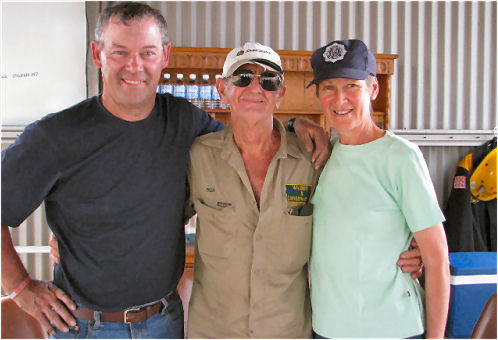

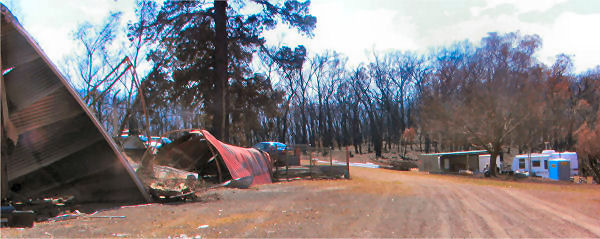
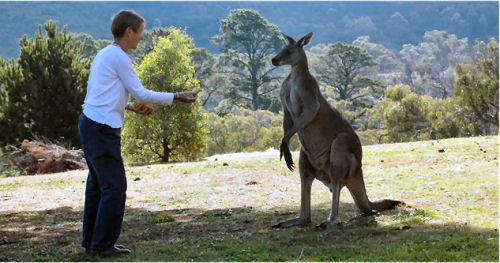 Stella & Boof in happier times
Stella & Boof in happier times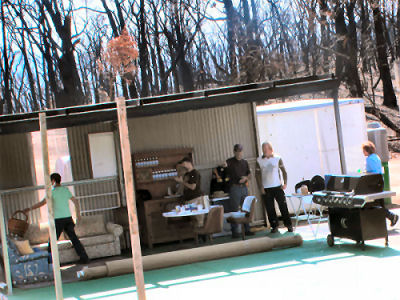

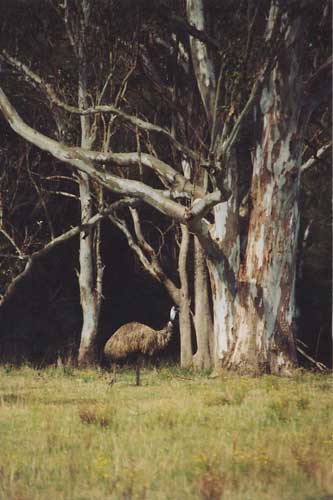
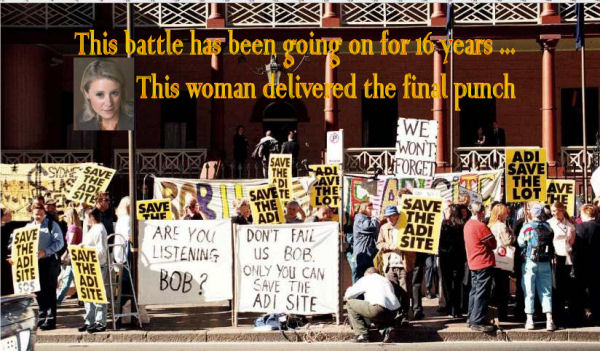

 "If you purchase two copies of The Age this Saturday, soak one in the bath overnight and read the other. Think of the copy coming out of the bath, as the landscape prior [to the impact of repeated fires] and the dry paper, as the landscape is today." (Article by Duane Norris for Natural Sequence Farming)
"If you purchase two copies of The Age this Saturday, soak one in the bath overnight and read the other. Think of the copy coming out of the bath, as the landscape prior [to the impact of repeated fires] and the dry paper, as the landscape is today." (Article by Duane Norris for Natural Sequence Farming) Andrew Bolt's story, "Green rules, black forests" is one of many mainstream media sources to keep alive the legend of the brave Sheehans' fight for justice and safety against their philistine greenie neighbours. But there is even more to that story than the press have so-far published. Read on...
Andrew Bolt's story, "Green rules, black forests" is one of many mainstream media sources to keep alive the legend of the brave Sheehans' fight for justice and safety against their philistine greenie neighbours. But there is even more to that story than the press have so-far published. Read on...
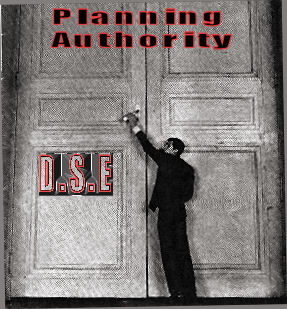

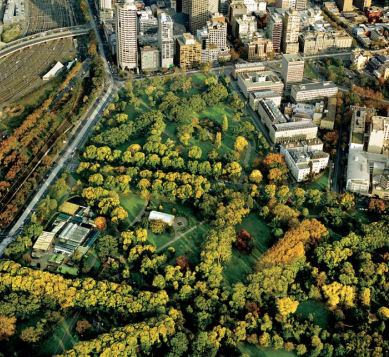
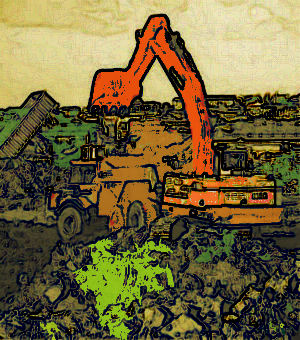
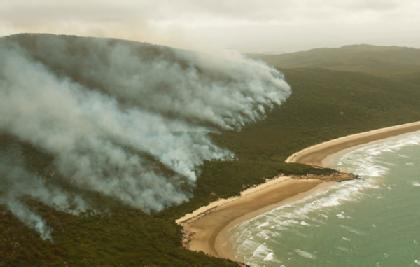

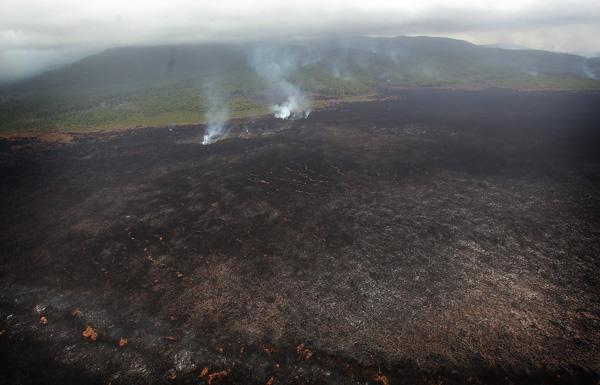
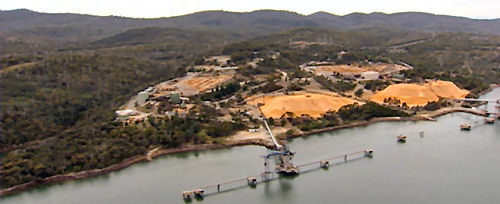

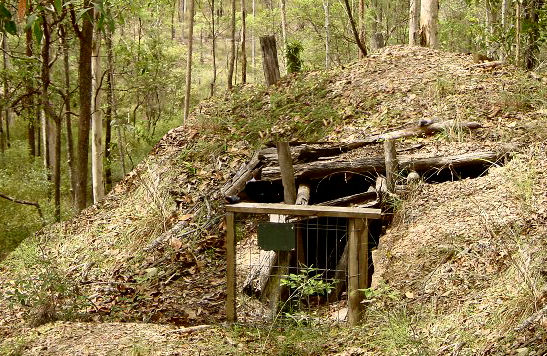
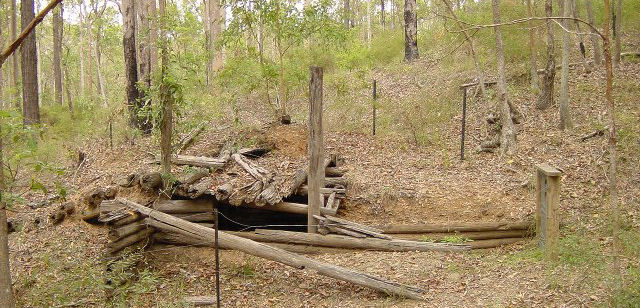
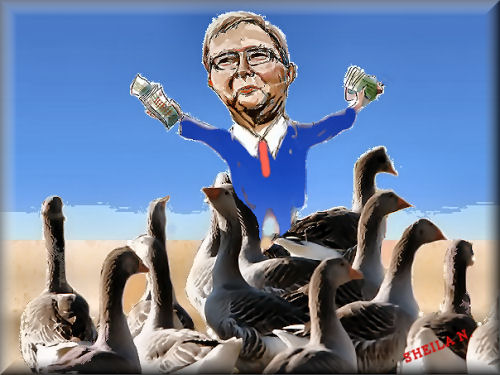
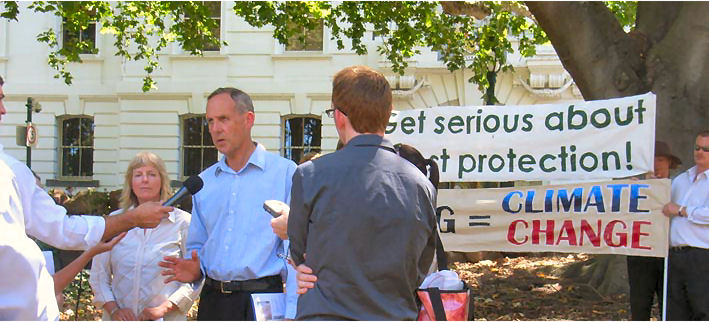
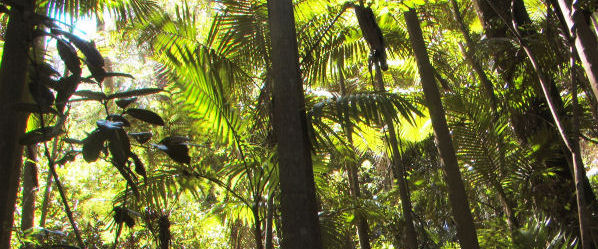
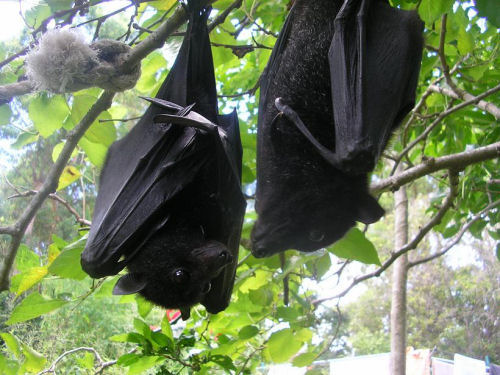
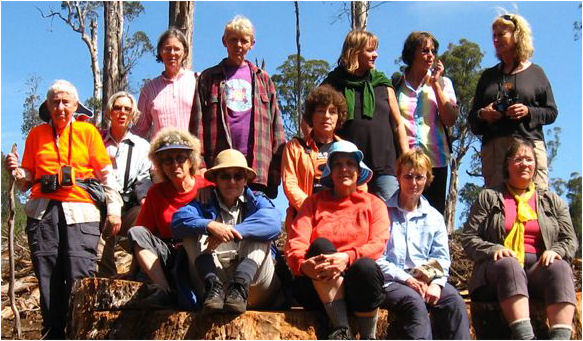
 But, right now, everyone is relying on this little guy:, the Endangered Orbost Spiny Cray (Euastacus diversus), who, if the law is respected, has a right to a buffer-zone of 100 m on either side of the creek he lives in.
But, right now, everyone is relying on this little guy:, the Endangered Orbost Spiny Cray (Euastacus diversus), who, if the law is respected, has a right to a buffer-zone of 100 m on either side of the creek he lives in.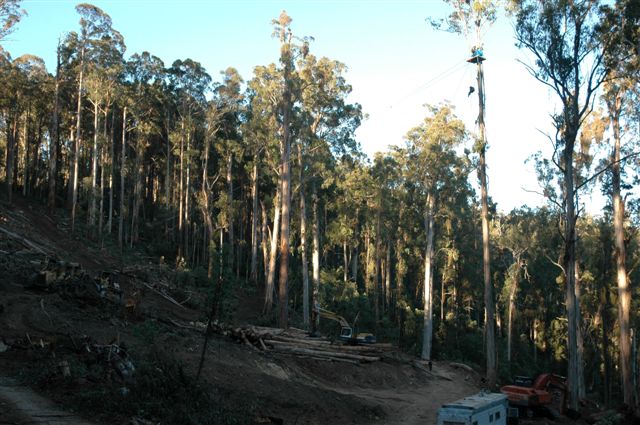
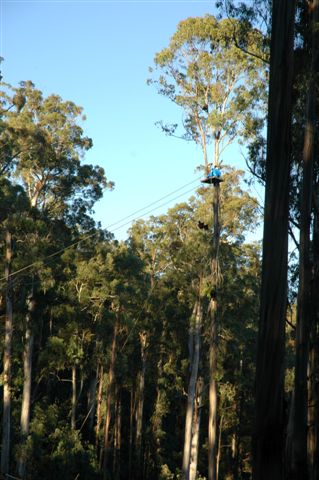
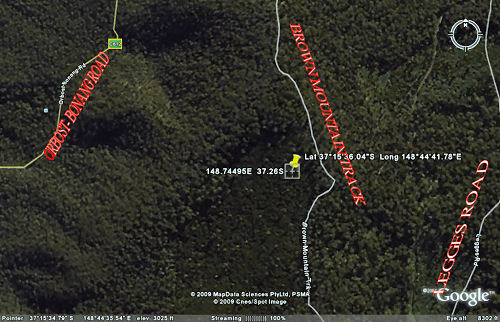

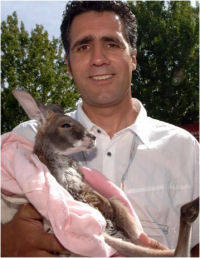

 There is nothing innocent about Peru! People in the world imagine Peru and think of Incas and Machu Picchu and its noble past civilisations. However, this era is well and truly over! Peru is still under the thumb of Colonialism, just the names have changed! Corruption is rife, and so is crime and human rights abuses. Mining companies are making a small minority mightily rich, and the indigenous and rightful owners of the land are suffering torture, death and death threats, loss of land, water pollution and loss of food. This is the 21st century, but all there is from the world is silence! Where is justice? This country is being raped, polluted and people are being abused, all quite "legally".
There is nothing innocent about Peru! People in the world imagine Peru and think of Incas and Machu Picchu and its noble past civilisations. However, this era is well and truly over! Peru is still under the thumb of Colonialism, just the names have changed! Corruption is rife, and so is crime and human rights abuses. Mining companies are making a small minority mightily rich, and the indigenous and rightful owners of the land are suffering torture, death and death threats, loss of land, water pollution and loss of food. This is the 21st century, but all there is from the world is silence! Where is justice? This country is being raped, polluted and people are being abused, all quite "legally". 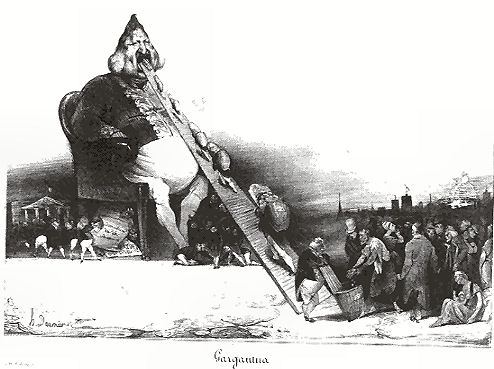
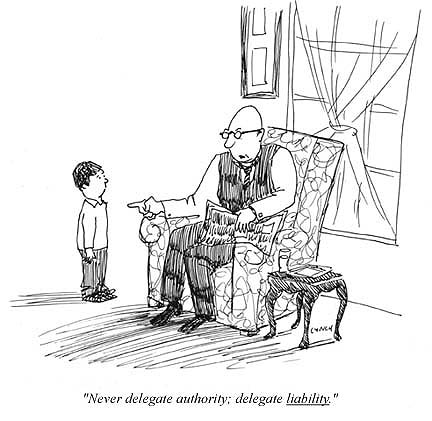
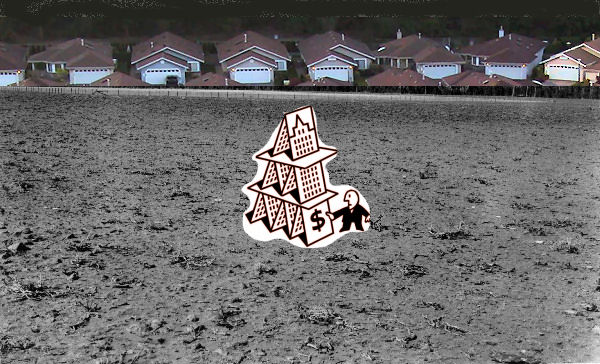
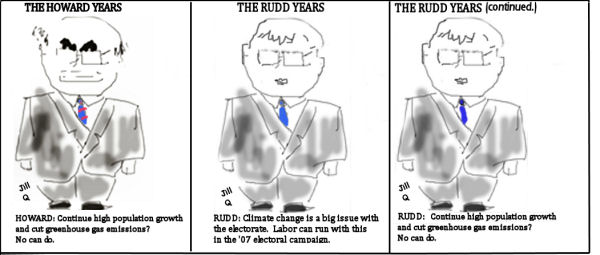
Recent comments